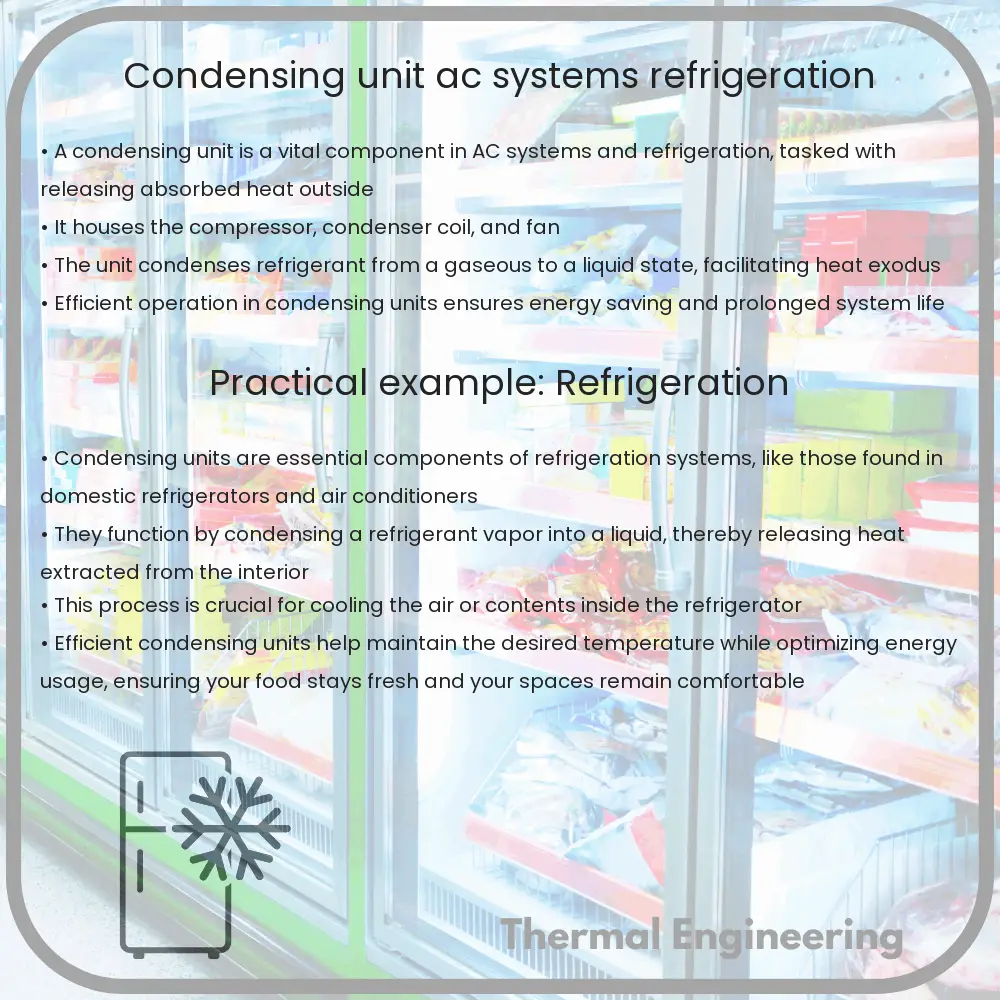Learn about the condensing unit, a crucial component in AC and refrigeration systems, its functions, and components.

Understanding the Condensing Unit in AC Systems and Refrigeration
The condensing unit is a pivotal component in air conditioning (AC) systems and refrigeration cycles. It serves a vital role in the heat transfer process that is essential for cooling environments or preserving perishables. In this article, we will explore how the condensing unit functions, its components, and the role it plays in different types of cooling systems.
What is a Condensing Unit?
A condensing unit is the part of the AC or refrigeration system where the vapor refrigerant is converted back to liquid form. It is usually located outside the home or commercial building, and consists of several key components including the compressor, the condenser coil, and the condenser fan.
Components of a Condensing Unit
- Compressor: The heart of the condensing unit, the compressor is responsible for compressing the refrigerant, which increases its temperature and pressure. This process prepares the refrigerant for condensation as it enters the condenser coils.
- Condenser Coil: This component facilitates the heat transfer where the compressed gas releases its internal heat to the surrounding air. It’s typically made of copper or aluminum which efficiently conducts heat.
- Condenser Fan: The fan blows outside air through the condenser coil to help cool the refrigerant down more efficiently. As the refrigerant loses heat, it starts to condense from a gas back into a liquid form.
How Does a Condensing Unit Work?
The operation of a condensing unit is based on the principles of the refrigeration cycle. The cycle begins in the compressor, where low-pressure gas is compressed to a high-pressure state. The high-pressure, high-temperature vapor then travels to the condenser coil. Here, under the action of the condenser fan, the ambient air absorbs the heat from the refrigerant, causing the temperature of the refrigerant to drop and it transforms back into a liquid state.
Once the refrigerant has liquefied, it moves to the expansion valve where it undergoes a sudden drop in pressure, cooling it further and preparing it for its journey back into the indoor unit. This cycle repeats continuously to maintain a consistent cooling effect inside the desired environment.
Types of Condensing Units
Condensing units can vary based on the type of refrigerant they use, their size, and their efficiency. They are also classified based on their application, such as:
- Residential AC Systems: These are typically smaller units designed to cool single rooms or houses.
- Commercial AC Systems: Larger and more robust, these units are capable of cooling multiple rooms or entire buildings.
- Refrigeration Systems: These are specifically designed for refrigeration applications and can vary significantly in size based on the requirements of the facility.
The Role of the Condensing Unit in Energy Efficiency
The efficiency of a condensing unit greatly affects the overall energy consumption of an AC or refrigeration system. Modern condensing units often include features like energy-efficient compressors and larger condenser coils to improve heat transfer and reduce operational costs. Improvements in fan blade design and the use of variable speed fans also contribute to enhanced efficiency, leading to more sustainable operations and lower environmental impact.
Conclusion
The condensing unit is an essential component of both air conditioning and refrigeration systems. Understanding how it works helps individuals and businesses optimize their use of these cooling systems and potentially reduce energy costs. Whether for residential comfort or commercial necessity, the condensing unit plays a critical role in temperature regulation and operational efficiency.